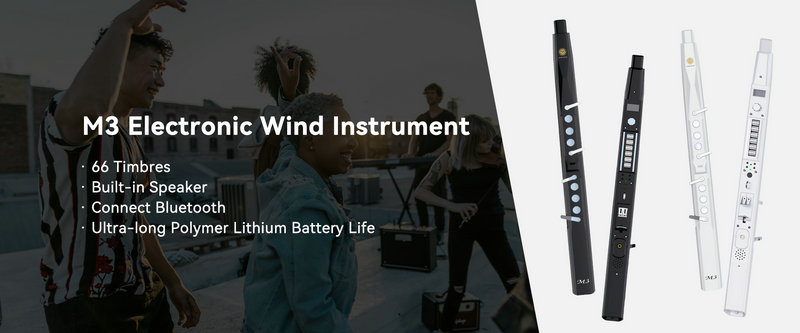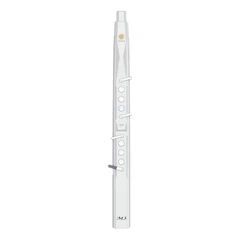Playing the electric flute can be a rewarding and creative experience. Here is an extensive guide on how to play the electric flute:
1. Understanding the Instrument
The electric flute is a modern and innovative musical instrument that combines traditional flute playing techniques with electronic capabilities. Before you start playing, familiarize yourself with its components, such as the keys, mouthpiece, and any additional control panels or buttons for sound manipulation.
2. Holding and Posture
Just like with a traditional flute, maintaining a proper holding position is crucial for comfort and ease of playing. Stand or sit upright with your shoulders relaxed. Grip the flute securely but not too tightly, allowing your fingers to move freely over the keys.
3. Breathing Techniques
Proper breathing is essential for producing a smooth and sustained sound. Take deep breaths from your diaphragm and control the airflow steadily as you blow into the mouthpiece. Practice long, slow breaths to build your lung capacity and control.
4. Sound Production
When blowing into the electric flute's mouthpiece, aim for a focused and centered airstream. Experiment with the intensity and speed of your breath to produce different volumes and tones. The electronic components of the flute may offer various settings to enhance or modify the sound.
5. Finger Placement and Key Pressing
Learn the correct finger positions for each note. Start with the basic scale and gradually progress to more complex fingerings. Pay attention to the accuracy of your key presses to avoid unintended notes or pitch fluctuations.
6. Scales and Exercises
Practice playing scales regularly to improve your finger dexterity and pitch accuracy. Start with simple major and minor scales and gradually incorporate more challenging ones. Scales are the building blocks of melody and help you develop a good sense of pitch.
7. Articulation
Work on different articulation techniques such as tonguing (using the tip of your tongue to start the notes) and slurring (connecting notes smoothly without distinct separation). This adds expression and clarity to your playing.
8. Dynamics and Expression
Explore the range of dynamics (loud and soft) on the electric flute. Vary the intensity of your breath and the pressure on the keys to create emotional and expressive performances.
9. Rhythm and Timing
Practice playing along with a metronome to develop a strong sense of rhythm and timing. This is crucial for playing in ensembles or with backing tracks.
10. Learning Music Theory
Understanding music theory, including notation, intervals, chords, and harmony, will enhance your ability to interpret and create music on the electric flute.
11. Listening and Imitation
Listen to accomplished electric flute players to absorb different playing styles and techniques. Try to imitate what you hear to incorporate new ideas into your own playing.
12. Experimenting with Effects and Settings
The electric flute often comes with a variety of effects and settings. Explore these to add depth, texture, and character to your sound. Effects like reverb, delay, and distortion can transform the sonic landscape.
13. Practicing Regularly
Consistent practice is key to improving your skills. Set aside dedicated practice time each day and gradually increase the difficulty of the material you are working on.
14. Joining a Music Group or Ensemble
Playing with others in a group or ensemble provides valuable experience and helps you develop your ability to play in sync with others and adapt to different musical situations.
15. Performing and Sharing Your Music
Once you have gained confidence, seek opportunities to perform in front of an audience, whether at local events, open mic nights, or for friends and family. Sharing your music not only showcases your progress but also inspires you to keep improving.
Remember, learning to play the electric flute is a journey that requires patience, dedication, and a passion for music. With consistent effort and a willingness to explore and experiment, you can unlock the full potential of this unique instrument and create beautiful music.
SUNRISE MELODY M3 Electronic Wind Instrument - The best-selling Electronic Wind Instrument
. 66 Timbres
. Built-in Speaker
. Connect Bluetooth
. Ultra-long Polymer Lithium Battery Life



